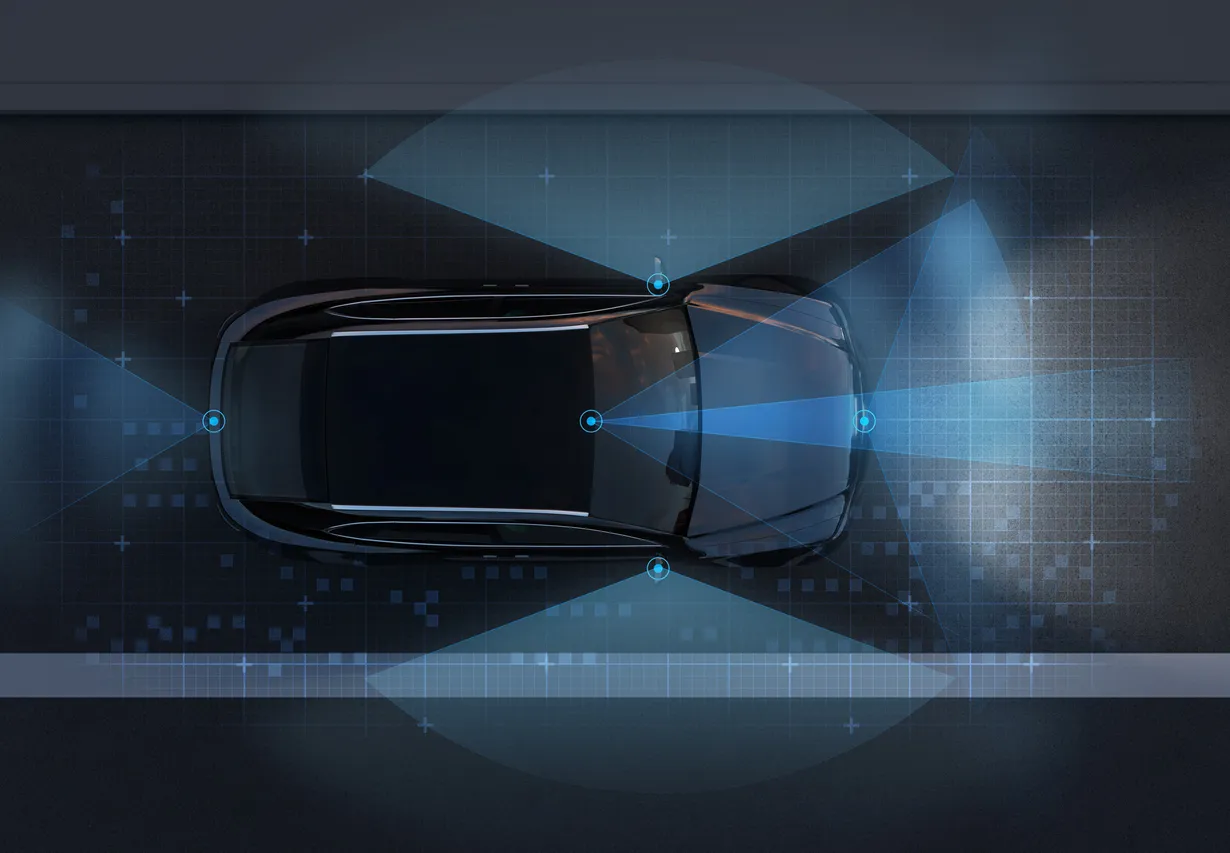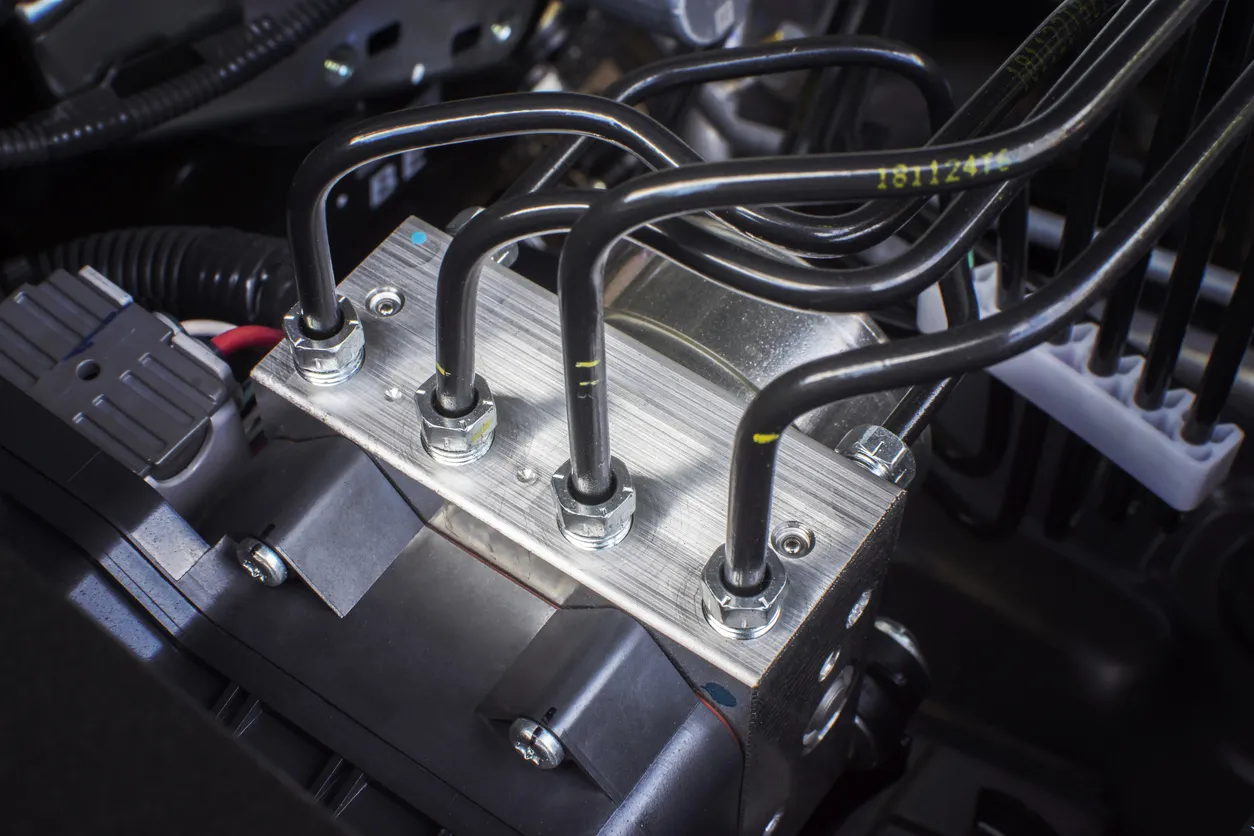Advanced Driver Assistance Systems (ADAS)

Most accidents that occur while driving today occur because of mistakes that drivers make. That means if you can get rid of driver mistakes, you make everyone safer on the road. That's what ADAS or advanced driver assistance systems are designed to do. These advanced systems actively work to prevent accidents from occurring by limiting or getting rid of common mistakes that drivers make. Modern vehicles are able to prevent many accidents because of the sensors and automatic driving features they are equipped with. Things like automatic cruise control, automatic headlights, and even something less sophisticated like blind spot monitoring can keep you out of trouble while driving down the road.
What is ADAS?
ADAS stands for advanced driver assistance systems, and it is a variety of different smart systems integrated into vehicles today. These systems can do impressive things like read road signs, wake up sleepy passengers, prevent you from drifting out of your current lane, and flip between the high beams and low beams as you drive down the road at night.
ADAS Example Features
There are many different features that work to make vehicles safer today. Many of these features rely on advanced systems to keep drivers and passengers safe. Below is a quick overview of some of those systems and how they help keep you safe.
- Automatic Braking - Slows or stops your vehicle to prevent an impending collision
- Blind Spot Monitoring - Uses proximity sensors to watch blind spots and uses an alarm to let you know when they are occupied.
- Lane Departure System - Watches lines on the road and sounds an alarm when you start drifting out of the lane. Some systems automatically steer your vehicle back into the lane to prevent drifting from becoming a serious issue.
- Traffic Sign Recognition - Reads road signs and updates your vehicle with the speed limit and other key bits of information.
- Pedestrian Detection - Watches for people walking on the road and automatically brakes to help you avoid hitting them.
- Adaptive Cruise Control - Checks for other drivers ahead of your vehicle and automatically reduces your vehicle's speed to prevent a collision. Raises the speed of your vehicle back to standard levels when the vehicle in front of you is out of the way again.
- Vehicle-to-Vehicle Communication - Vehicles are beginning to communicate with one another for things like traffic patterns in real-time.
Car Driving Assistance Warnings
While many vehicles don't have many systems that take control of your vehicle in a significant way, other than traction control systems and ABS systems, there are many safety features that serve as warnings to you while you drive. More cars come equipped with blind spot monitoring systems today.
There are also vehicles that have warnings for lane drift as well as systems to keep you from falling asleep while driving. Many cars are now equipped with vibrating steering wheels and alarms that let you know when you aren't driving safely. Your car will start pointing out issues you're making while you drive, and by pointing out those issues, your car might help you avoid common accidents that you otherwise would suffer with.
Most vehicles have at least a few warning systems, but some will even monitor the current speed limit and let you know how fast you should be driving in different areas or tell you about upcoming traffic issues. As technology advances and our vehicle's ability to perceive its surroundings improves, the warning systems that come on vehicles will also improve. Get yourself a car or truck with a good warning system, and you'll know more about what's happening on the road around you and how you can stay safe.
Automatic Safety Systems
There are many warning systems actively working in vehicles today to keep people safe. These systems don't actively change how your vehicle performs; instead, they inform you that something is going wrong so you can change how you're operating your vehicle. Warning systems aren't the only form of ADAS in use today, though. Some advanced vehicles come with automatic safety measures that make changes to how your vehicle is operated without your input.

For instance, an emergency braking system can slow your car to prevent a rear-end collision from occurring. The system detects when a vehicle is getting too close and slows you to either stop a collision or minimize the intensity of the collision.
An ABS system is another example of a safety system actively changing how your vehicle drives. With ABS, your braking system pumps the brakes rapidly to prevent your wheels from locking up when you slow down. These systems help you maintain reliable braking conditions even when roads are slippery and dangerous to drive on.
There are many different active systems on vehicles today. Some cars have lights that swap between high and low beams depending on where other drivers are on the roads. There are even cars that will actively steer your vehicle to keep it in the current lane. If you begin drifting, the vehicle will sound a little warning, and if you don't fix the issue, it will steer you itself.
As vehicles become more intelligent, the number of active safety features that can take control of how the vehicle performs will increase. Many companies are developing self-driving cars capable of handling most driving tasks without input from a driver. These systems will help eliminate problems caused by human error when driving. Since most accidents are a result of human error, most accidents can be eliminated by technological advancements and powerful safety features.
Get the Advanced Driver Assistance Systems That Help You Feel Safe Behind the Wheel
Car driving assistance features are becoming one of the most sought-after features when purchasing vehicles today. If you want to keep yourself and your family safe in a newer vehicle, you should look at how many useful safety features the vehicle is equipped with before you make a purchase.
If you find a vehicle with the right set of safety features, you give yourself the ability to avoid more accidents, plus help keep you and your family safer while you drive. Look for the latest safety features when buying your next vehicle to help you choose the right vehicle for your family. Using a vehicle history report allows you to compare safety features equipped on that vehicle, glimpse into the history of the vehicle, and also find information about what types of problems that vehicle may have faced in the past, such as floods, collisions, or recalls.
FREE Vehicle Search
- Accidents
- Problem Checks
- Title Records
- Recalls
- Values
- Specs
-
InfoPay, Inc. (dba GoodCar) is an Approved NMVTIS Data Provider
-
-

















































